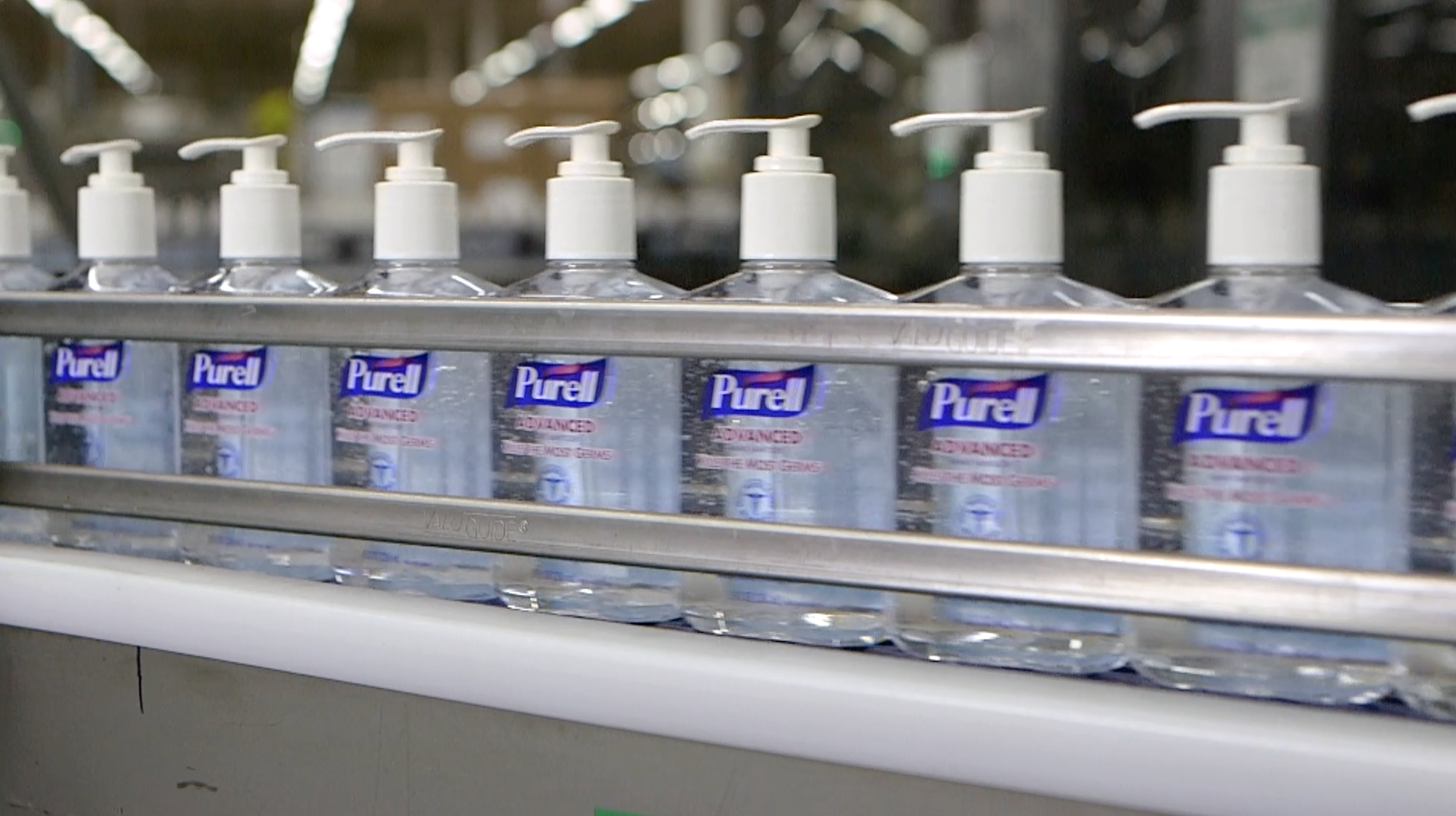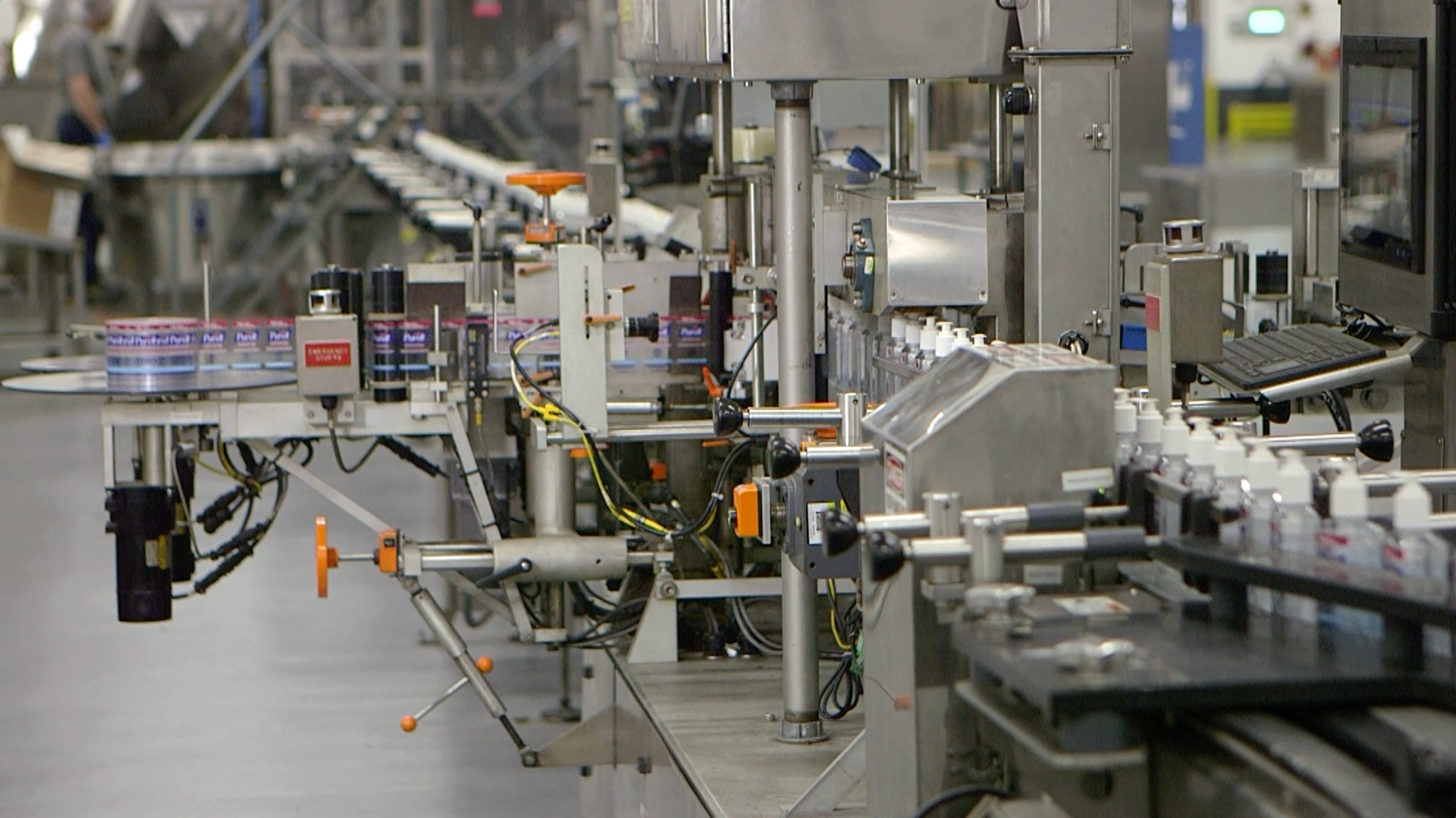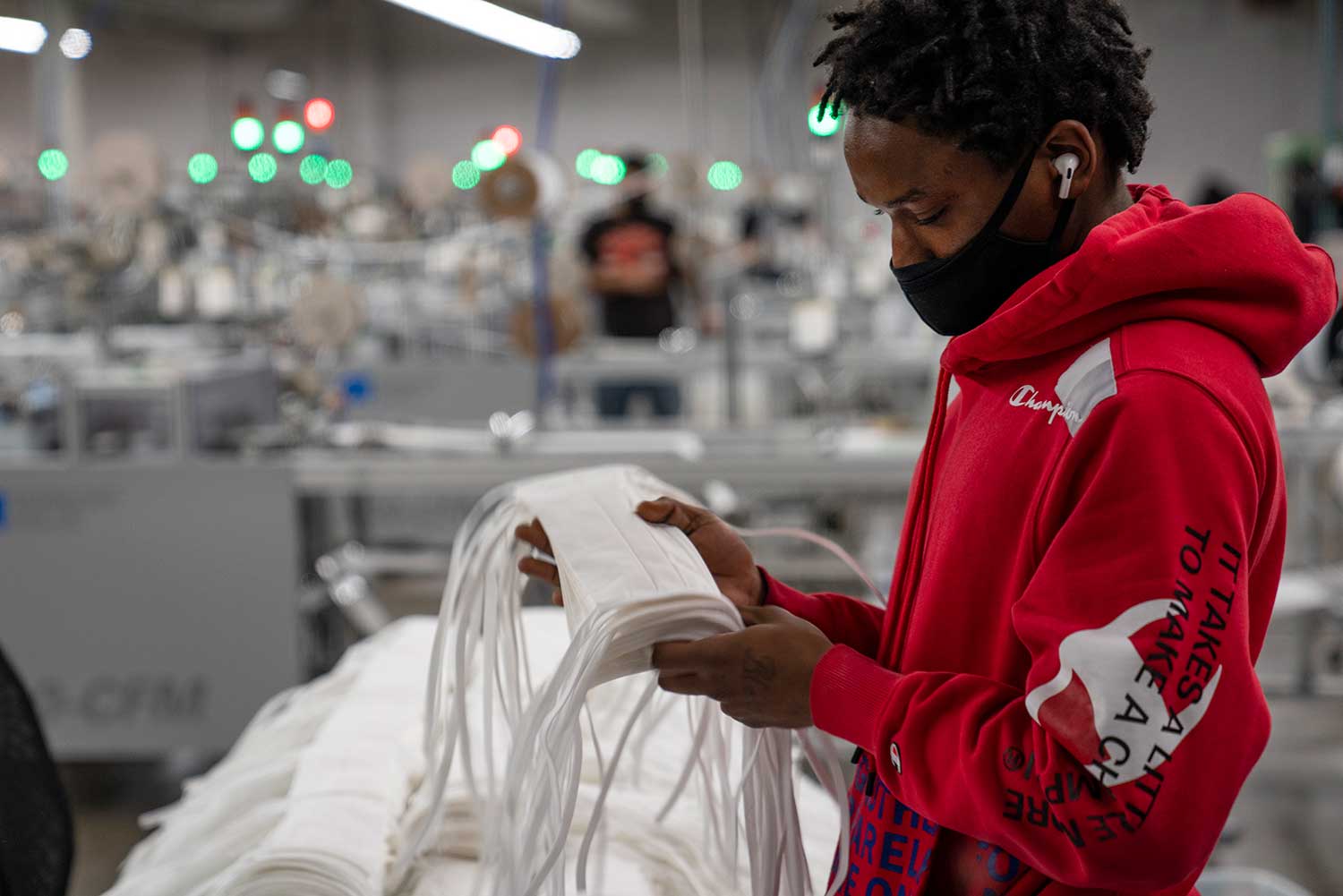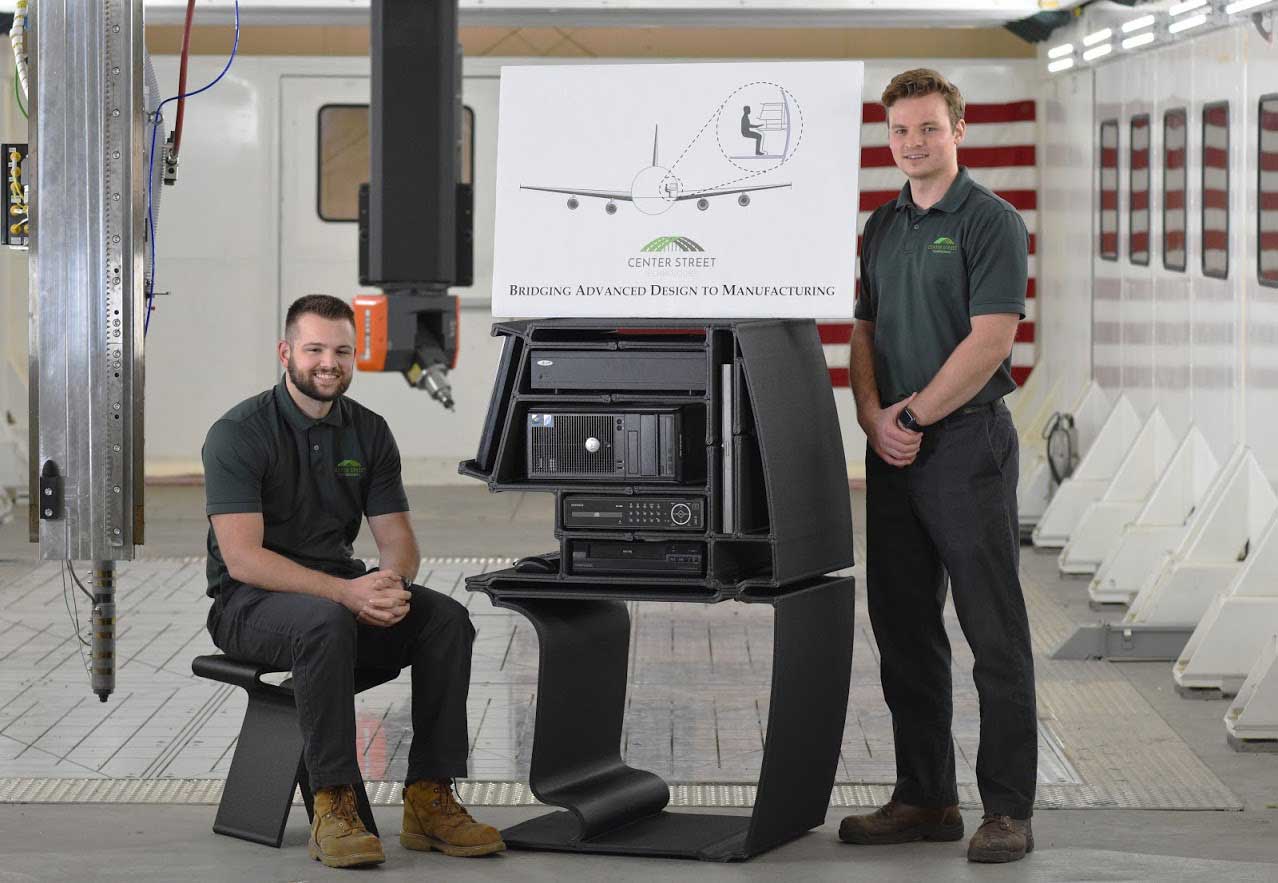At the height of the global pandemic in 2020, some manufacturers locked down. Some went out of business entirely. Others faced unimaginable spikes in demand – companies like GOJO, MAKERS OF PURELL™, the family business in Northeast Ohio that invented hand sanitizer in 1988.
Despite stress, fear, and unprecedented new safety protocols, GOJO found a way to deliver. The numbers tell an incredible story. GOJO increased production of PURELL™ by 300% in 2020. It shipped 140 billion doses of soap, sanitizers, and spray around the world. It ramped up 2.5 million square feet of new manufacturing and distribution space. And it hired more than 500 new employees. In one year.
For Stephanie Onderko, automation and systems director for supply chain at GOJO, it was a moment of truth for the company’s purpose of “saving lives and making life better.” People needed GOJO products to stay safe, and GOJO had to find a way to make enough, fast enough.
The company’s secret weapon was technology. It’s been investing for years, transforming the way it makes things – think all things digital, automated, and connected. Technology is the single biggest reason GOJO was able to triple production virtually overnight.
“It allowed us to get more product out in the market quicker than we would have if we didn’t have those things in place. It helps with the flexibility and agile manufacturing that are so critical. It helps us stay competitive as a business,” says Onderko.
GOJO is investing heavily in Industry 4.0 because these technologies are revolutionizing manufacturing. Ever since Henry Ford invented the first production line to make the Model T, manufacturers have been finding ways to make production easier, faster, and more profitable. Industry 4.0 offers more promise and progress than any other suite of technologies in history.
Collaborative robots that work alongside people. Big data from computers and sensors on machines to remotely monitor and troubleshoot. Artificial intelligence to make instant adjustments on the production line. Virtual reality to easily train people.
Like many manufacturers, GOJO is excited about the promise of these technologies. But they’re also very aware of the pitfalls. That’s why they’re not taking a technology-first approach – they don’t want to fall into the “solution looking for a problem to solve” trap.
“This is not about putting technology in for technology’s sake. This is about aligning and using that technology as a key enabler for our business strategy and to continue to grow and profit as a business. We constantly challenge and break our current processes. So, we really look at using Industry 4.0 technologies to enable process innovation and continually get better,” says Onderko.
During a year rife with supply chain disruptions, raw material shortages, and shutdowns, GOJO was able to accelerate its use of new technologies – largely because it had a clear strategy and had already made significant investments. It all started several years ago with a project to automate the production of custom-labeled hand sanitizer.

GOJO, MAKERS OF PURELL™ has plants in Ashland, Cuyahoga Falls, Navarre, Maple Heights, and Wooster.
“We put in production lines that had digital printing capability and vision and quality checks throughout. And because it was all digitally captured, if the process did not have any errors in it, the product could be released automatically to the customer. We didn’t have to wait multiple days for a human to look at the quality release record. This also enabled customers to customize our product. To be able to change labels in real time, digitally throughout the process, meant we didn’t have to stop the equipment, wait for it to be switched over for a label change, and lose all that production time,” says Onderko.
Digitizing production reduced lead times from 10 days to two days. GOJO is also able to reduce inventory on hand, and fewer expired products are scrapped because things are made to order, not sitting on shelves collecting dust.
Next, GOJO automated the blending of huge batches of hand sanitizer and then started automating more production with sensors, robotics, human-machine interfaces, and digital processes. Every manufacturer is different, but Onderko says the key to GOJO’s success has been to start small.
“This is a marathon, not a sprint. So, start small and get some buy-in. You’re going to need champions, and you’re going to need buy-in to continue this journey. Show on a small scale what Industry 4.0 can do for your business and then expand from there. We learned things we didn’t even realize we were going to learn, and it has just kind of exploded from there,” says Onderko.
GOJO’s production is now about 50% automated. But beyond the robots and cobots you see working the line alongside workers, the company has invested the most in technology that’s invisible.
“What you don’t see are the connected systems behind the scenes. With better information, we are producing what we need, when we need to produce it. If you think about decades ago, we had a lot of inventory, hoping the order matched what we had so that we could fulfill the order and make the customer happy. We flipped that completely, and we’re doing things in a more connected way. We’re not leveraging our valuable space and resources to make things we don’t need,” says Richard Clark, GOJO’s vice president of supply chain systems, strategy, and solutions.
Step by step, GOJO plans to digitize and connect all its production, operations, supply chain, and distribution to provide more connectivity, transparency, and customer service. They’re also using Industry 4.0 to create new products and services – like making hand sanitizer part of the Internet of Things (IoT) with a sensor-based online monitoring system called GOJO SMARTLINK™.

Automated and digital production line at GOJO, MAKERS OF PURELL™.
“For years, the way buildings have been managed is really hit or miss. Are we out of paper? Are we out of soap? Are we out of sanitizer? You have to either have someone looking constantly to see if it’s out or you just have to expect them to run out and fill them. With the SMARTLINK™ technology, we’re able to send the office building services company right to where the challenge is. When the soap or hand sanitizer is out, we know it’s out and needs to be refilled. We’re creating completely connected restrooms to ensure that hand hygiene products are always available,” says Clark.
And that’s not just convenient – it’s also safer. Hospitals using SMARTLINK™ have seen an 82% improvement in hand-washing compliance. There’s definitely demand, so GOJO plans to use technology to create more connected products and services. But even as a large, global company (operations on four continents and 2,500 employees), GOJO recognizes it can’t do Industry 4.0 all on its own. Its strategy is built on taking a strong partnership approach with technology suppliers, vendors, and other manufacturers.
“As a region, we’re in this together. We’ve had some great success in partnering with other manufacturers and learning from their journeys. If our region doesn’t get behind industry 4.0, I think we’ll wake up and find that some other region, some other community, some other geography has. This is not an if, it’s a when question. The technology’s proven. The opportunity that it presents is proven. Once we fall behind, catching up is expensive and painful. We want to keep up and we want Northeast Ohio to lead,” says Clark.
If the region does become a leader in Industry 4.0, Team NEO, leader of the Smart Manufacturing Cluster of Northeast Ohio (an initiative that’s at the heart of this Blueprint), estimates it could provide an economic boost of $4 to $13 billion.
That significant upside does come with risk – Industry 4.0 technologies are an expensive bet, particularly for the small companies that make up more than 90% of the region’s manufacturing industry. But the greatest risk of all is being left behind, cut off from a global supply chain in which digital connection is the currency of the future. That’s why GOJO plans to keep investing in Industry 4.0 and keep sharing its journey with other manufacturers. Because every factory that takes the technology leap brings Northeast Ohio one step closer to reinventing the future.


